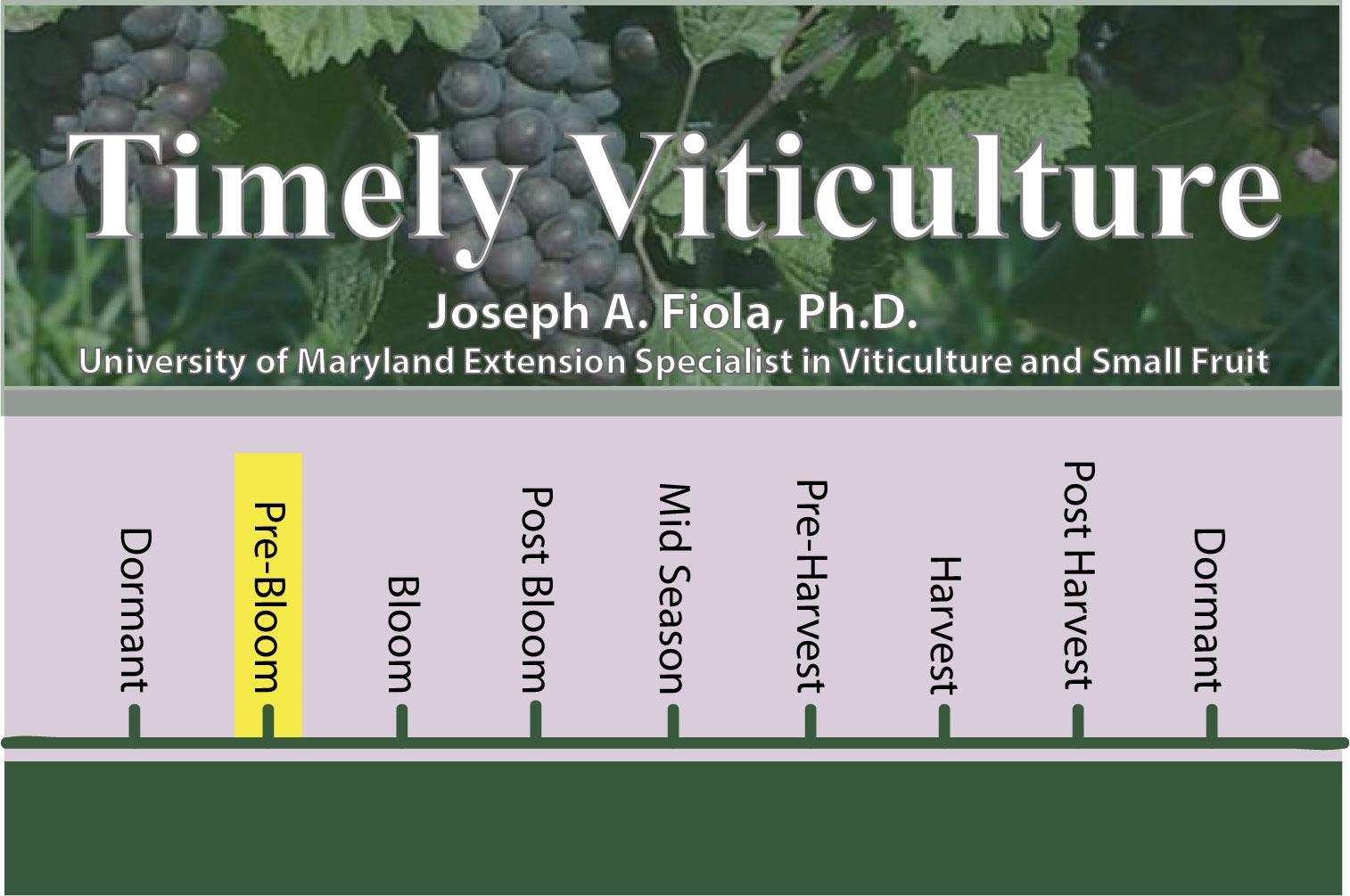Canopy Management - Shoot Thinning and Positioning
Managing excessive vine vigor is one the greatest battles in Eastern viticulture and this problem is exacerbated in seasons with high rainfall and warm spring temperatures. Many vigorous varieties and variety/rootstock combinations are quickly beginning to increase in shoot length. Obviously, there are differences in bud break timing among cultivars and regions of the state so you need to know the critical time for each cultivar/location combination in your vineyard. This is a critical time to do some basic canopy management chores, shoot thinning and positioning especially in vertical shoot positioned (VSP) trellises with movable or static catch wires.
- Some sites (e.g., heavy, fertile soils) and varieties (e.g. Cabernet Sauvignon) are prone to high vegetative vigor and the risk of overcrowded canopies.
- Overcrowded/dense canopies are more prone to disease due to lack of air movement, resulting in high humidity and increased canopy drying time in the morning or after precipitation, as well as poor pesticide penetration.
- Overcrowded/dense canopies are more prone to contain shaded clusters which may result in decreased varietal character, increased herbaceousness, and delayed ripening.
- To maintain good vegetative/reproductive balance in the vineyard, the baseline goal should be to maintain about three to five shoots per linear foot of trellis for VSP (and High Cordon) depending on cluster size.
- Cultivars vary in cluster size and clusters/shoot so relating back to previous thinning levels and final yields achieved can be helpful in making shoot (and eventually cluster) thinning decisions.
- This is also a good time to thin out weak and unwanted primary and secondary shoots to get to your final density. These can typically still be snapped off by hand without needing pruning shears or causing damage to the spur or cane. In years when there has been cold damage to primaries, take care to leave secondary shoots for some crop and future spurs.
- Position the shoots within the catch wire before the tendrils start to attach as this will make the job much more difficult and greatly increases the possibility of breaking the shoots while moving.
- The timing of positioning the shoots downward for Smart-Dyson and Scott-Henry usually occurs within a short window for individual varieties – before the shoots may break off – after the shoots may not move. You need to work with each variety/location combination to get the timing correct.
- Delaying until later to conduct these operations will greatly increase the time that will be necessary to achieve the same result.
Some may question the importance or necessity to shoot thin, contesting that they might not have a large enough crop if they thin down to the suggested level of shoots. Shoot thinning down to the recommended three to five shoots per linear foot of trellis for VSP is critical for both pest management and optimal fruit quality.
- Leaving more than the recommended range will result in overcrowded, very dense canopies.
- Crowded canopies do not dry out as quickly in the morning or after precipitation due to lack of air movement. Maintaining high humidity in the canopy micro-climate exacerbates disease problems.
- There is a much higher incidence of downy and powdery mildew in crowded canopies.
- Botrytis and other late-season fruit rots will also be more difficult to manage.
- A properly thinned canopy will reduce the need and the time it takes to pull leaves.
- Crowded canopies limit pesticide penetration that will reduce efficiency and exacerbate disease problems.
- Crowded canopies do not dry out as quickly in the morning or after precipitation due to lack of air movement. Maintaining high humidity in the canopy micro-climate exacerbates disease problems.
- As for crop volume (yield), the recommended shoot density has been shown to give yield within the recommended range. Most of the shoots have multiple clusters and the vine has the potential to compensate when shoots are removed.
- In almost all cases you may/will still have to drop additional clusters later to get down to the level of crop level that you can fully ripen. You can estimate and adjust your crop later in the season.
- As for fruit quality, one cannot over-emphasize the importance of shoot thinning to allow adequate
sunlight into the canopy and especially the clusters.- There is considerable research that shows that an open canopy with good light penetration to clusters results in more uniformly ripened fruit with higher levels of secondary products and varietal character.
- Shaded leaves and shaded clusters lead to reduced quality fruit and herbaceous characteristics.
- NOW is the best time to get this done, as the longer you wait:
- the more difficult it is to physically get into the canopy
- the more time it will take to decide which shoots to cut
- the more difficult it is to make the cuts (young shoot easily snap off with your hand - older shoot need to be cut with pruning shears to avoid damage to the cordon)
- the tendrils will attach and make it difficult to remove the shoots.
- the tendrils will attach and make it more difficult to move the catch wires.
- the disease will get established in the canopy making it more difficult if not impossible to control later.
If your goal is fully ripened, disease-free, high-quality fruit, this is a critical management practice that needs to be accomplished very soon.
Timely Viticulture is designed to give those in the Maryland grape industry a timely reminder on procedures or topics they should be considering in the vineyard.
